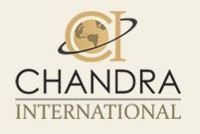Global Edible Films And Coating Market (2022 to 2028) - Size, Share & Industry Trends Analysis Report - ResearchAndMarkets.com
The "Global Edible Films And Coating Market Size, Share & Industry Trends Analysis Report By Application, By Material, By Regional Outlook and Forecast, 2022 - 2028" report has been added to ResearchAndMarkets.com's offering.
The Global Edible Films And Coating Market size is expected to reach $4.2 billion by 2028, rising at a market growth of 7.5% CAGR during the forecast period.
The edible coating is a green technology that is used to regulate gas exchange, moisture transfer, and oxidation processes in a variety of products. One of the most significant advantages of employing edible films and coatings is that various active chemicals can be included in the polymer matrix and taken with food, improving safety along with nutritional and sensory properties. Manufacturers of food products have strengthened their efforts to extend shelf life and improve existing packaging technologies, ensuring microbial safety and food preservation from the effects of external variables. As a result, new product developments from producers are expected to contribute to the edible films and coatings market's growth.
The edible films and coatings market is expected to be pushed by consumers' greater adaptation of eco-friendly packaging options. This technology can help to improve the product's quality, shelf life, safety, and functionality. Increased use of plastic in food packaging and transport raises concerns because it is hard to decompose properly. Edible films and coatings are one of the finest prospective food packaging alternatives since they can increase food storage, give an alternative to conventional packaging solutions, are biodegradable and eco-friendly, and can extend product shelf life.
Apart from packaging replacements to artificial packaging, the product has a lot of benefits. Polymer is found in edible materials, and it has several advantages, including a low unit of weight and excellent tensile qualities. Natural biopolymers have various advantages in life sciences since they can be obtained from marine life, agriculture, or animals, and they are biocompatible and biodegradable. As a result, manufacturing organizations are actively spending in research and development.
Market Growth Factors
Natural Resources are Increasing Demand for Edible Packaging
Traditional artificial food packaging materials have a number of drawbacks in terms of environmental contamination and the use of non-renewable resources in manufacturing. The search for alternative packaging materials and package formats has risen dramatically.
Sustainability, the environment, ethics, food safety, food quality, and product costs are all becoming increasingly relevant aspects for modern-day customers when purchasing food goods, and a number of these topics are regulated by food packaging laws. All of these issues have influenced the food packaging industry's growing demand for edible coatings. Since these edible films are made from natural and organic ingredients, such as wheat gluten, whey protein, maize zein, waxes, cellulose derivatives, and pectins, these edible films are made from fruits, and nuts, grains, and vegetables.
Edible packaging is becoming more popular as a substitute for plastic packaging
Oxo-biodegradable plastics are manufactured from regular plastics and combined with additives to stimulate biodegradation. The principal result of oxidation, on the other hand, is the fragmentation of the substance or product into small particles that end up in the environment. As a result, some companies are producing edible wrapping to extend the storage life of fruits and vegetables, reducing waste and improving shelf life. Apeel Sciences, a start-up established in the United States, developed an edible existence coating for fruits called Apeel to combat food waste, and plastic packaging waste, and deliver up to two times the shelf-life in the entire food business. Apeel is created from plant skins, peels, and seeds, which include food components.
Marketing Restraining Factor:
Edible coatings' limitations
Despite the obvious benefits of edible coatings, some obstacles prevent edible coatings from being used on a large basis. The use of propolis-based edible coatings in the food sector is restricted due to their intense, distinctive scent and taste. When compared to untreated tomato, candelilla wax loaded with F. cernua active constituents had poorer sensory acceptance. As per Tahir et al., a high concentration of gum edible coating may harm sensory perceptions of coated products.
Similarly, Sucheta et al. found that tomatoes covered with composite edible films including commercial pectin, maize flour, and beetroot powder lost their color angle over time as compared to uncoated tomatoes. Stability of bioactive components, poor film-forming characteristics, and surface adhesion may be an additional problem that limits commercial applications of aloe Vera gel edibles, in addition to their negative impact on sensory quality.
Scope of the Study
Market Segments Covered in the Report:
By Application
- Fruits & Vegetables
- Bakery & Confectionery
- Dairy Products
- Meat, Poultry, & Seafood
- Nutritional Products
By Material
- Polysaccharides
- Protein
- Lipids
- Composites
By Geography
- North America
- US
- Canada
- Mexico
- Rest of North America
- Europe
- Germany
- UK
- France
- Russia
- Spain
- Italy
- Rest of Europe
- Asia Pacific
- China
- Japan
- India
- South Korea
- Singapore
- Malaysia
- Rest of Asia Pacific
- LAMEA
- Brazil
- Argentina
- UAE
- Saudi Arabia
- South Africa
- Nigeria
- Rest of LAMEA
Key Market Players
- Tate & Lyle PLC
- Ingredion, Incorporated
- DuPont de Nemours, Inc.
- Koninklijke DSM N.V.
- Kerry Group PLC
- Dohler Gmbh
- Cargill Corporation
- Glanbia PLC (Watson Inc.)
- Lactips
- Pace International, LLC (Valent BioSciences LLC.)
For more information about this report visit https://www.researchandmarkets.com/r/dv81jr
View source version on businesswire.com: https://www.businesswire.com/news/home/20220713005491/en/




